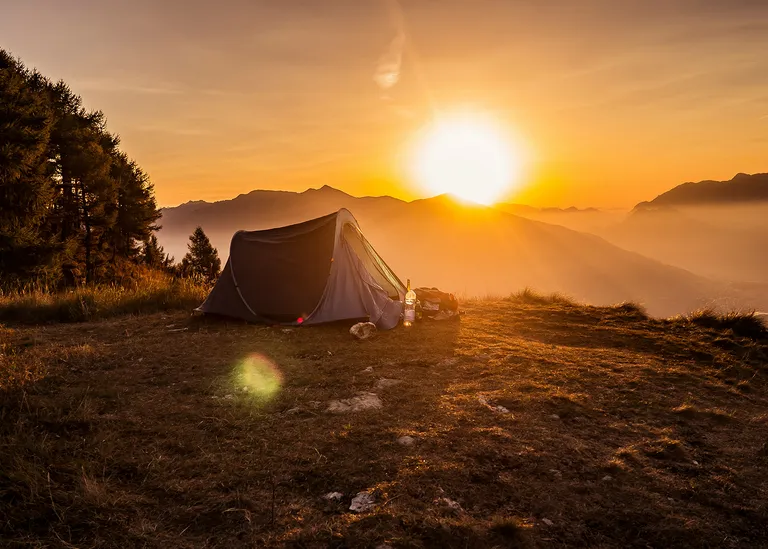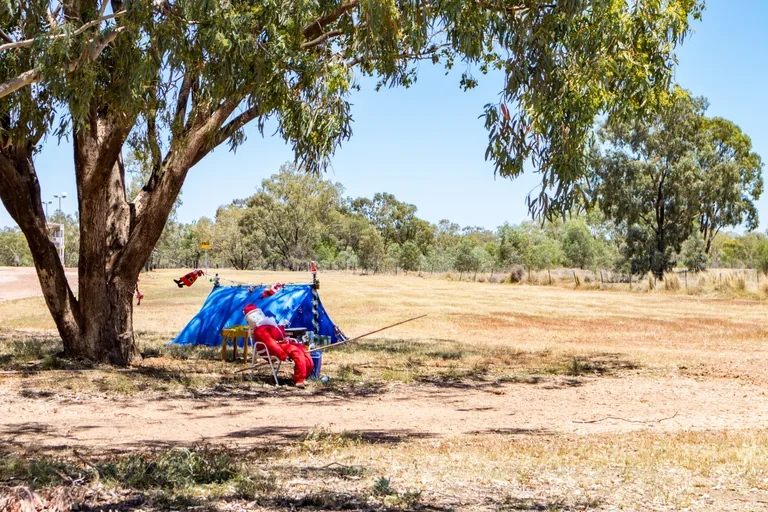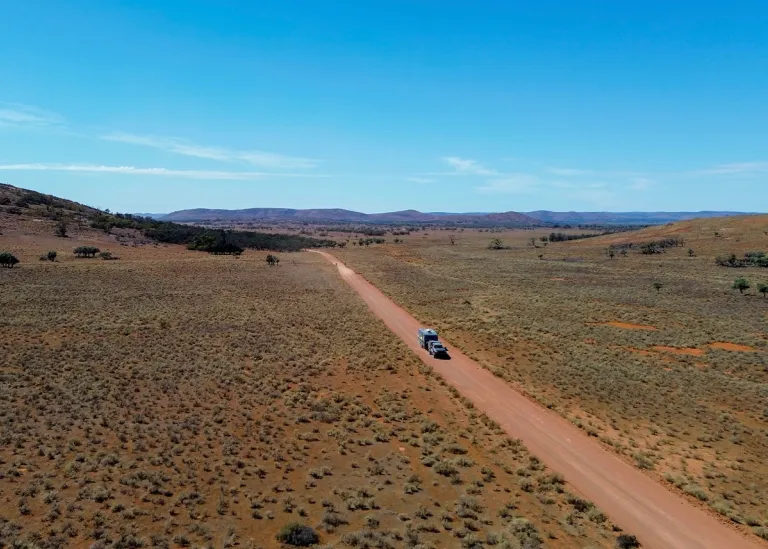Having the ability to recover your 4WD in the event of it becoming stuck is obviously very handy, but understanding the right way to recover a 4WD is extremely important to the safety of yourself and everyone around you, even if you’re equipped with Club 4X4’s Off-Road Recovery Cover.
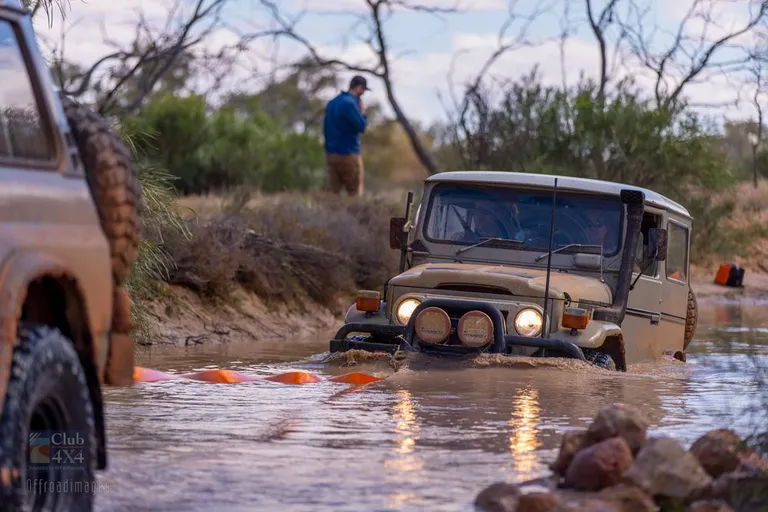
It’s absolutely essential to get things right and not take chances whilst recovering a vehicle as there is just so much that can go wrong if you don’t understand the gear or use the wrong gear for your recovery type. With vehicle recovery, when things go wrong, it can happen really quickly and in a big way. What is recovery gear? It’s anything that will assist you in recovering a stuck vehicle. There is just so much of it on the market but most importantly, it needs to be the right gear for your situation. All vehicle recovery gear which goes under a load needs to have load rating and should be clearly labelled. Simply put, when looking at load rated products, never use gear in a recovery which doesn’t have a correct recovery rating to suit your vehicle recovery situation.
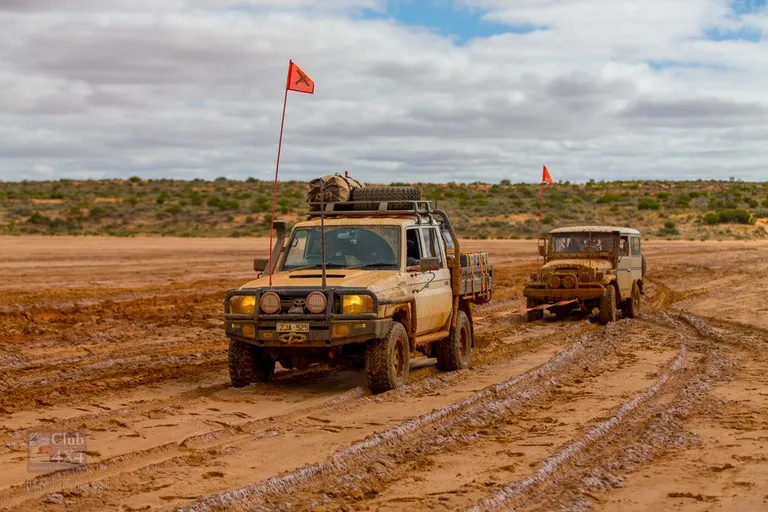
So what do you need?
You really need to figure this one out for yourself but I’ll tell you what I take and why.
The following is a list with a difference…
Tyre deflator
The number one item in my recovery kit is the trusty tyre deflator. I am sure that people out there will be saying, “That’s not recovery gear!” But I have to tell you, I have recovered myself a number of times through just letting the tyres down and I have assisted many stranded people through doing the same. It’s amazing how effective letting your tyres down a little will get you unstuck. As we are working with other 4WDs, we have three of these on board to ensure we can help adjust other vehicles tyre pressures.
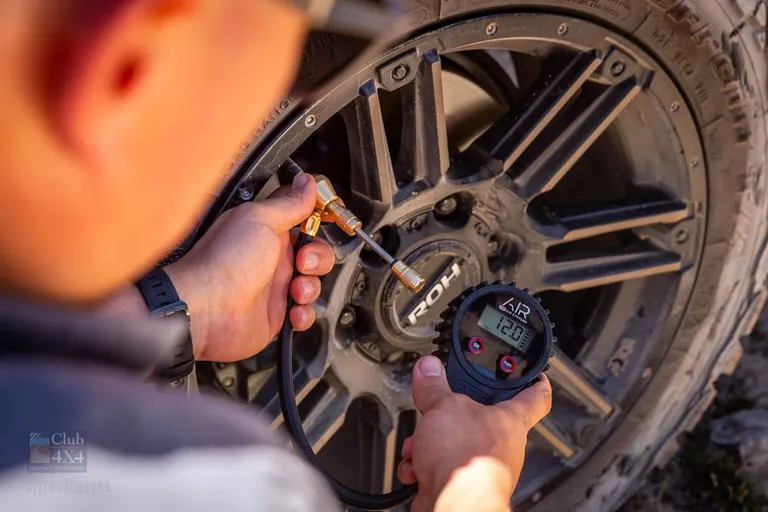
Snatch Strap or Kinetic Rope
Snatch Straps have been around for many years and are a must have for a 4WD enthusiast. I usually carry two Snatch Straps. One will be fairly new and would come out for a serious snatch recovery and the older one would be utilised for light recoveries where I am not loading it up too much. The older one will have been used in all sorts of messy stuff and has probably been washed a few times, but will do the job and saves ruining a perfectly good strap in the mud for someone who is hardly stuck. Another version of a Snatch Strap is Kinetic Rope and it works very similar to the Snatch Strap. Whilst we have used various of these products on photoshoots, I must say that I am still a fan of the Snatch Strap.
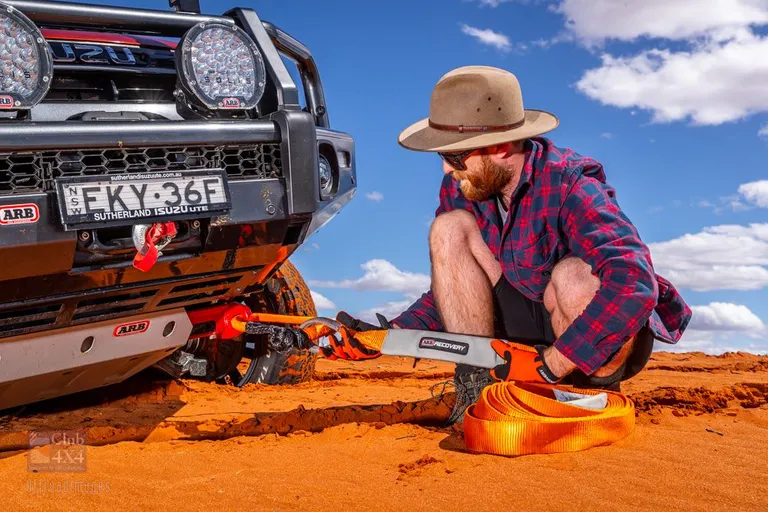
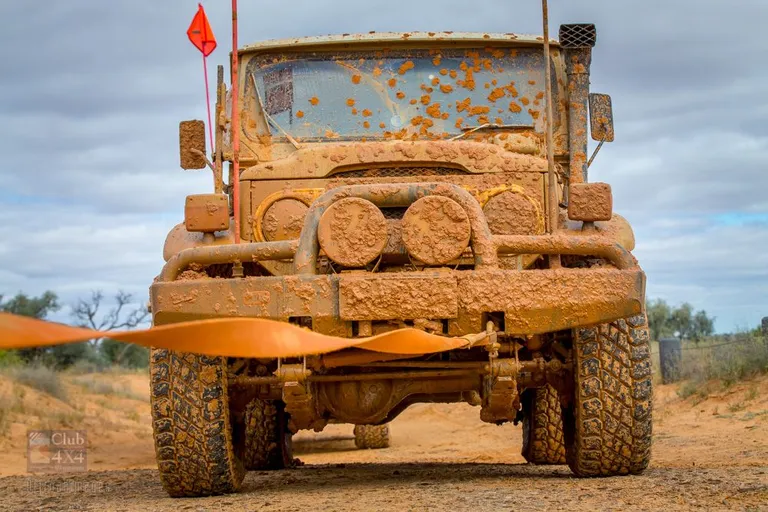
A long handled shovel
Any shovel will help, but a long handled shovel will get right in under the diffs to clear sand or mud. Anything that will assist you in doing this will help you recover your vehicle but its also a handy tool around a campfire. The long handled shovel is definitely the most effective tool for recovery. I have used a vinyl covered A4 cardboard clipboard to recover a 100 series on a sand dune, but it took a very long time.
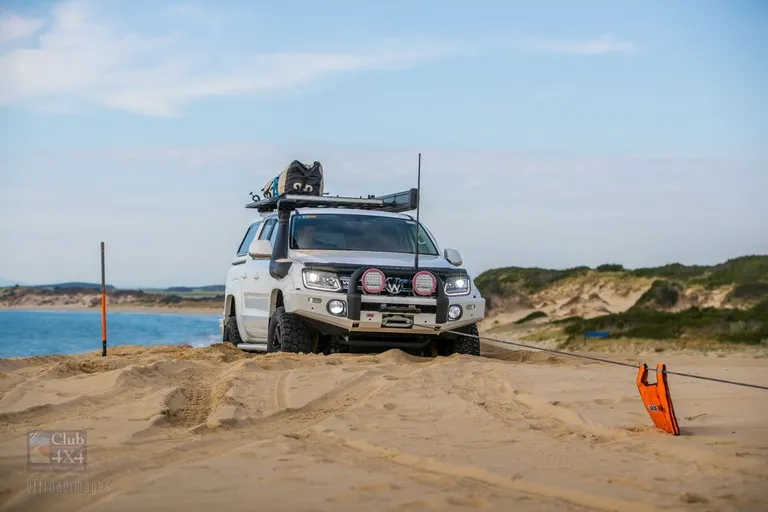
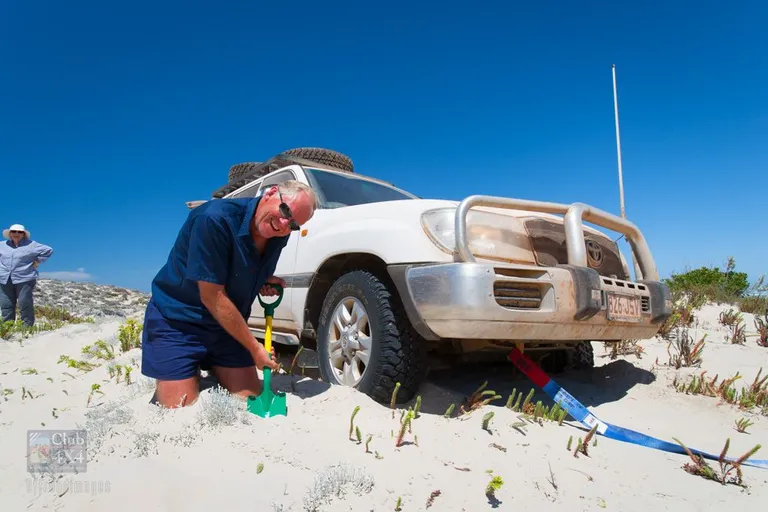
Offroad Images Photography
A long handled shovel can even be used as a jacking plate.
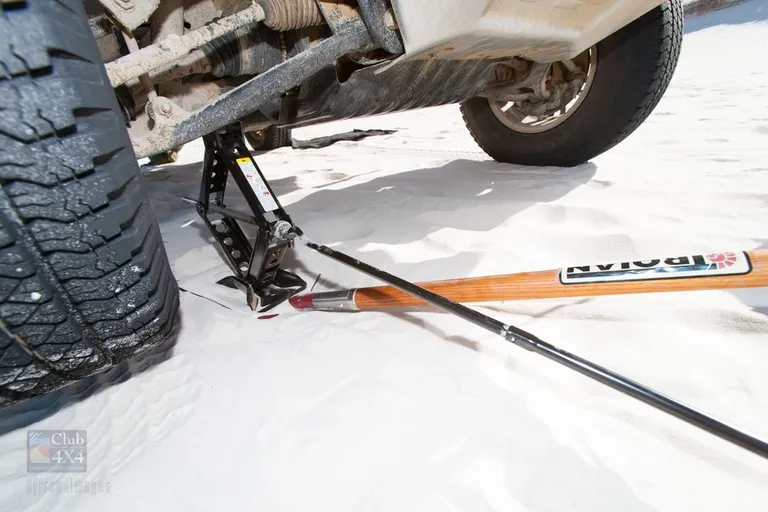
Offroad Images Photography
Tree trunk protector
If you have a winch, you will need one of these. It effectively will protect a tree from being damaged during winching by spreading the load over the trees surface, reducing the risk of cutting the tree and ring barking it whilst under load. The Tree Trunk Protector also has many other advantages. We use ours as a bridle strap between the outside recovery points on our rear bar to equalise the load to both sides of the chassis. We carry one of these and I feel it’s a must have item in your recovery kit.

Winch Ring or Snatch Block
Both of these items allow you to reduce the load on the winch providing a mechanical advantage over a straight single line pull. You can also utilise these items to create a change of direction during a recovery, effectively winching around a corner. Now I prefer the winch ring as it works extremely well with synthetic rope and is lighter, reducing weight in the vehicle and at the same time reduces the weight in the recovery line during a recovery. The Winch Ring works with soft shackles as well, which is my preference over Bow Shackles. There are many on the market, but I am currently running the CAOS and the MaxTrax Winch Rings. The Snatch Block is an effective tool when used with steel cable and creates similar benefits, but it’s really a personal preference.
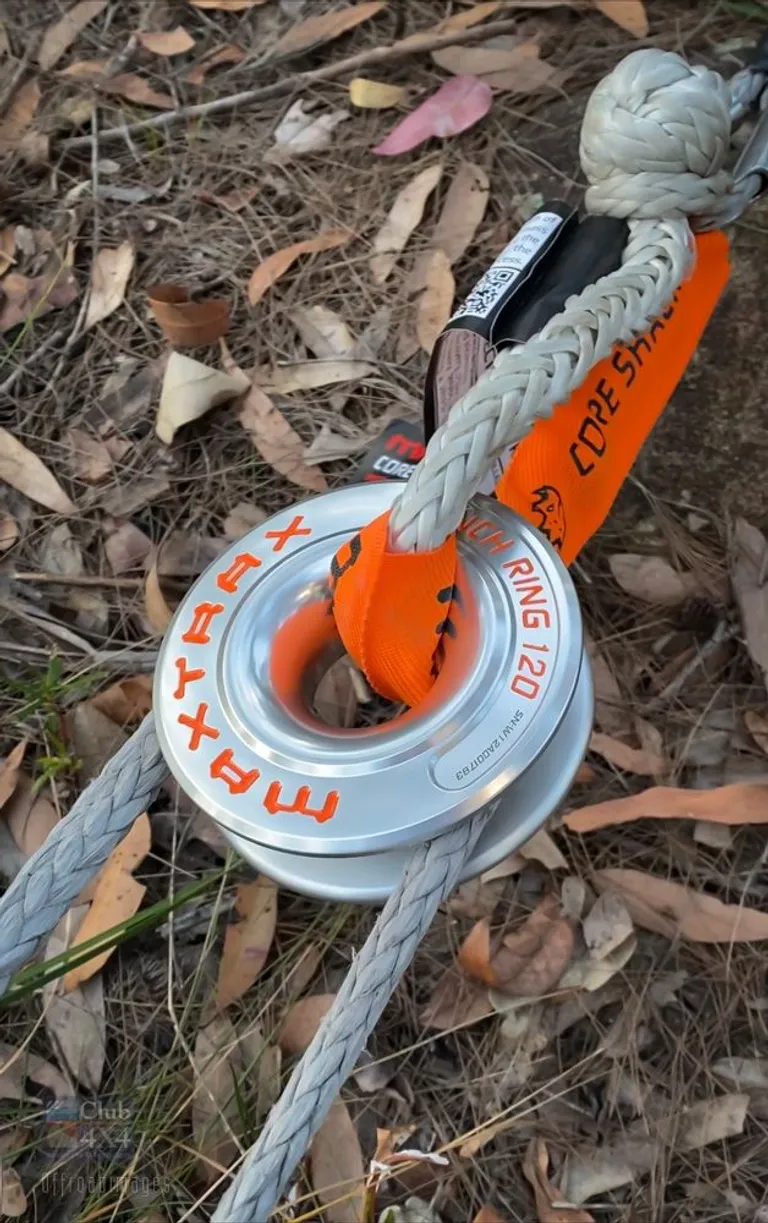
Soft Shackle or Bow Shackle
I have gone to a lot of trouble to remove weight out of my recovery bag and also out of a recovery line during a recovery by removing Bow Shackles out of my recovery kit. There is nothing wrong with the Bow Shackles, I just prefer the Soft Shackle. It should be noted that Winch Rings need to be operated with Soft Shackles as the two really work hand in hand. Soft Shackles have abetter place for me in a recovery exercise by reducing weight in a recovery line and this is important in my mind. I carry three Soft Shackles in my recovery kit.
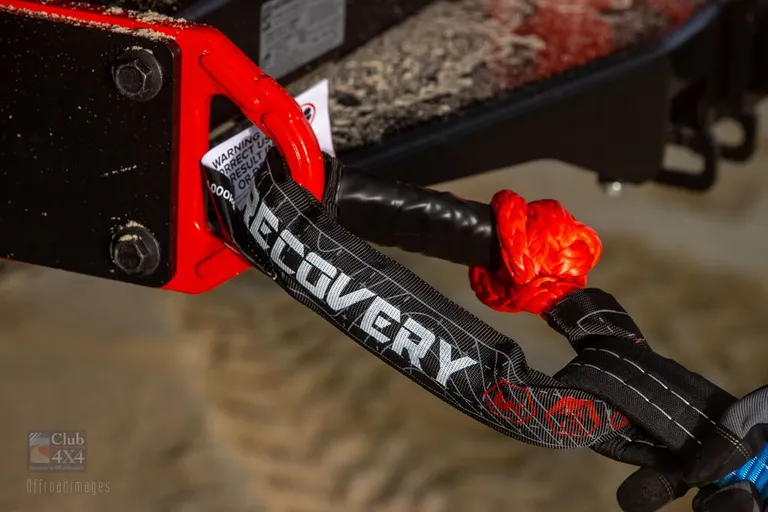
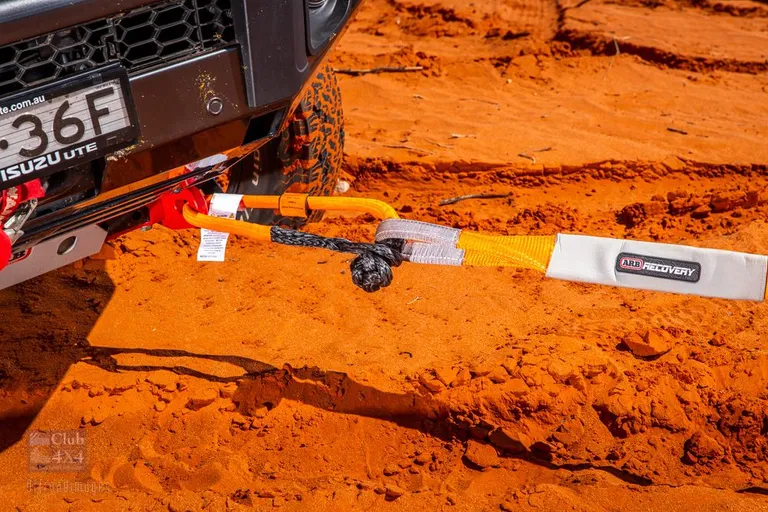
Winch Extension Strap or Winch Extension Cable
The Winch Extension Strap looks very much like a snatch strap, but will usually be a different colour. It doesn’t have the stretch of a snatch strap and is ideal for winching. The Winch Extension Cable is effectively a length of synthetic winch rope allowing you to run it through a Winch Ring. Both products are ideal to assist you in extending the distance which you are winching from, but the Winch Extension Rope allows you greater versatility. As an example, by utilising Winch Rings and Tree Trunk Protectors, you can create a change in direction of the winch recovery even in a double line pull.
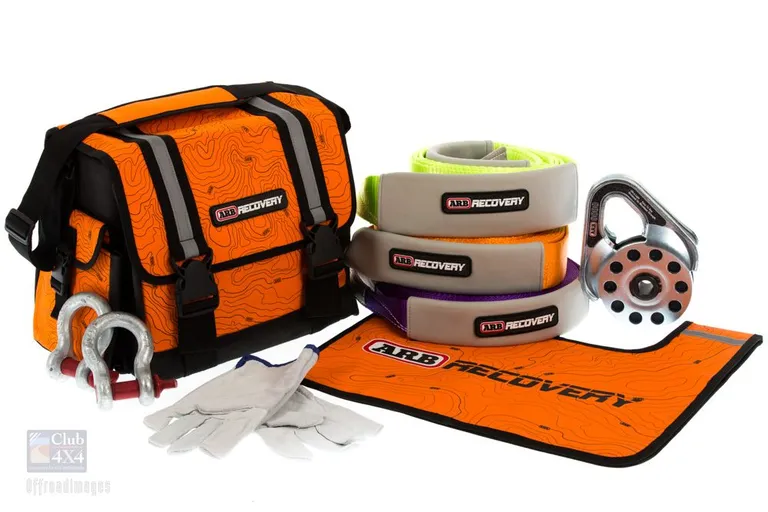
Recovery Boards
The two versions strong in the market are the Maxtrax and Treds. Pick a brand, but these are an absolute must I feel. There are other brands and designs on the market which have a similar and also very different approach. The Maxtrax are the original board in the 4WD market, but recovery boards have been used for years. The use of the Marston Mat and its various versions, converted soft environments to transport vehicles over and even land aircraft. There are many different designs and sizes of these products, but you’ll need to look at what suits you. I carry four Maxtrax Extremes and I have to say, when you need them, you are glad you have them.
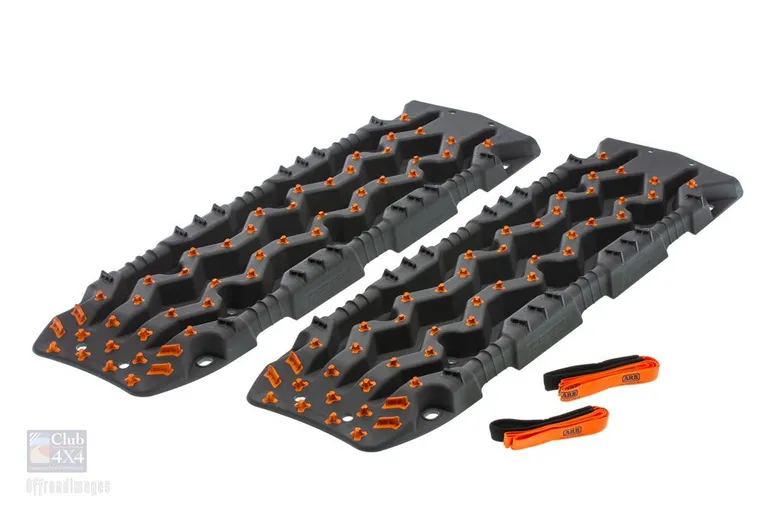
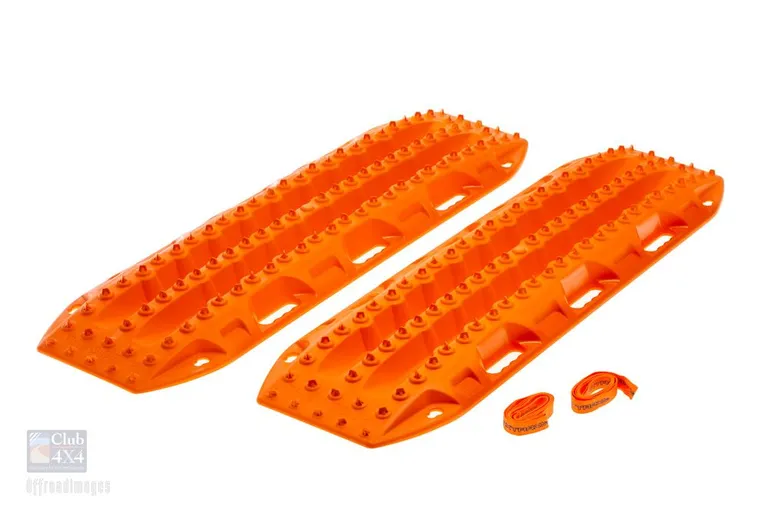
Cable Dampener
A Cable Damper or Dampener is an item which dampens the strap or cable in the event of an equipment failure. The idea here is to soften the impact of a failed item bringing the strap or cable to the ground to avoid it striking property or person. These are sold by many different companies and do not have a standard in build. There are many different opinions on how you actually use them. Some are a standing item which you simply lay over the strap or cable and some you are required to fill them with sand to weight them down. These products do work very well, but if you don’t have one, you might use a blanket or an old jacket or even the recovery bag itself. As long as the item dampens the impact.
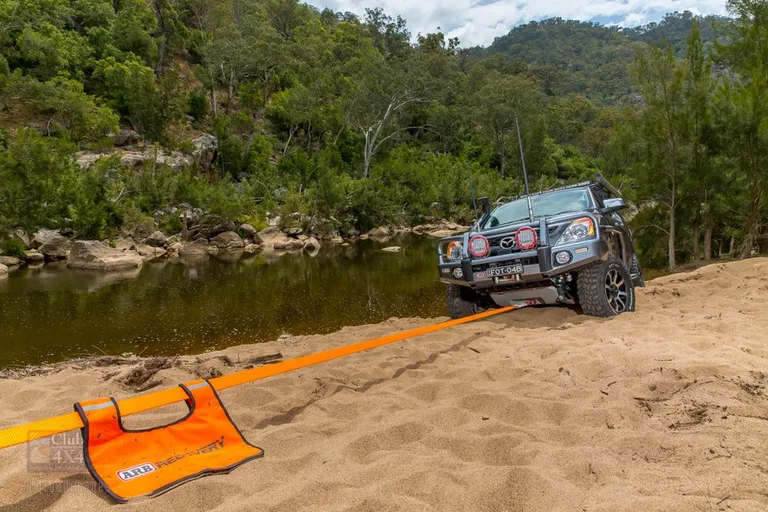
Gloves
Gloves are a great item to take 4WDing. Whether you’re packing rocks or road building, clearing a fallen tree etc, you may as well have a good set of gloves on hand to avoid injury. So why not have a set of gloves in your recovery kit or on hand to provide protection during a recovery. If you are dealing with steel winch cable, gloves are a must.
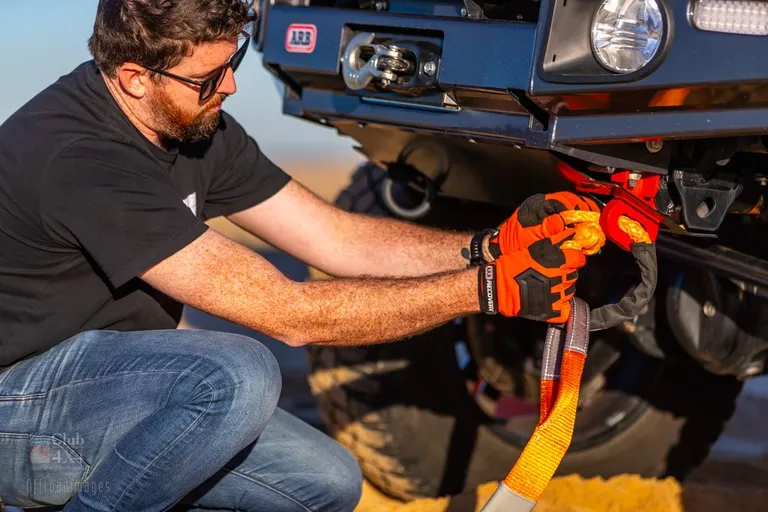
Heading out on a trip with friends? Make a plan.
My recommendations to vehicle recoveries are as follows…
Make time to talk with the people you are heading out on a trip with and make recovery plans before you go anywhere.
Where are the recovery points on each vehicle?
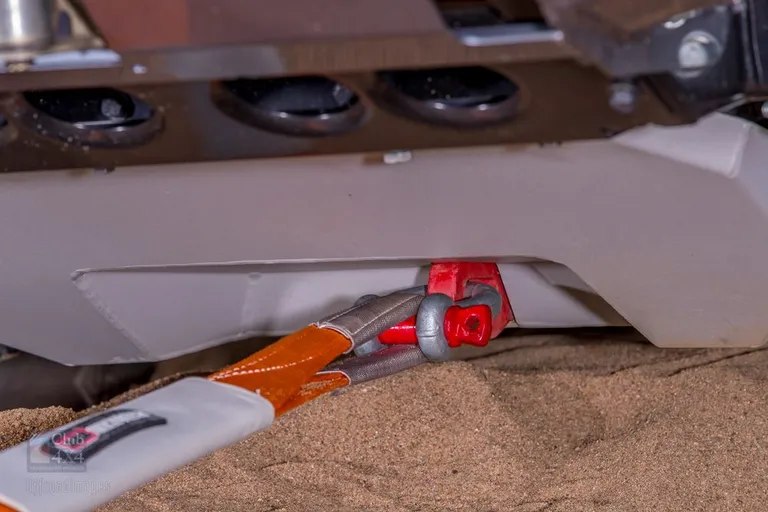
Are these points rated?
There is no such recovery point as a non-rated point.
Where is each vehicles recovery gear stored?
Is the recovery gear in good order?
In the event of a recovery, who will call the shots?
Unless someone is trapped, you should never rush a recovery.
Attach recovery gear to your vehicle before you head into a site which you are concerned about. It’s so much easier to attach a strap to a vehicle before its under water or deep in mud. Make sure this strap is well secured and will not become tangled in the vehicle. Either feed it over the bonnet and into the cabin through the window, or cable tie it to the top of the bull bar for someone to grab quickly.
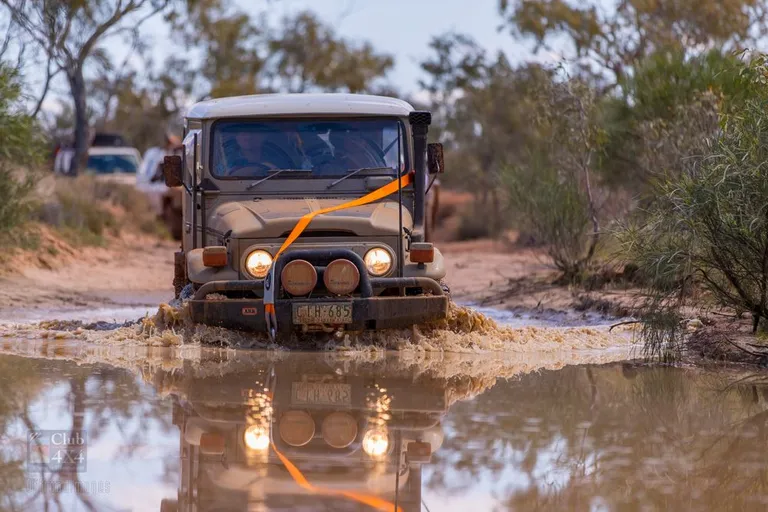
Think about what could go wrong and plan for that.
Make sure that everyone is clear of the recovery area at all times during the recovery.

Offroad Images Photography
Never touch or step over a live cable or strap.
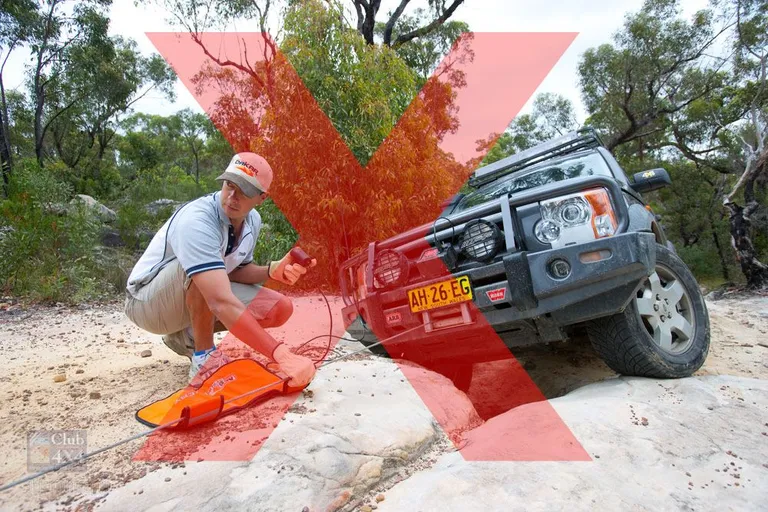
Offroad Images Photography
Ensure that every decision is spoken clearly with everyone involved, and allow everyone involved to have their option and their thoughts heard… this is a joint decision during a recovery and while one person, speaks the process during the recovery clearly over the radio, everyone should have already taken part in the decision of how the recovery will take place.
The person speaking over the radio should keep the calls short but clear, allowing for someone to speak of something important taking place. If the radio is busy, a horn blast might be a great identifier for everyone to stop what they are doing.
Most importantly… know your gear, plan the recovery and communicate… but stay calm and try not to stress as it’ll just make the process harder for everyone.

Know your gear and learn how it should be best utilised to ensure a safe recovery every time.
“Cheers”-
Michael Ellem
Offroad Images

The Campfire – Feedback
Just like sitting around the campfire, we would love to hear what you have to say. You can be involved simply by entering your comments below.
Also… we will be featuring stories about photography tips and tricks, 4X4 preparation, build planning and maintenance, as well as featuring inspirational locations for you to visit in your 4X4. So please get involved and let us know what you’d like to hear about. If you have any requests for stories to be featured in campfire or would like to provide feedback about this article, please send us a message on our social links:
Instagram: @offroadimages
Facebook: @offroadimages
YouTube: youtube.com/OffroadImages
Website: www.offroadimages.com.au
As 4X4 enthusiasts who live for the opportunity to create awesome imagery anywhere in Australia, we know that our vehicle assets are covered wherever we travel to create that shot, as we are insured by Club 4X4.



